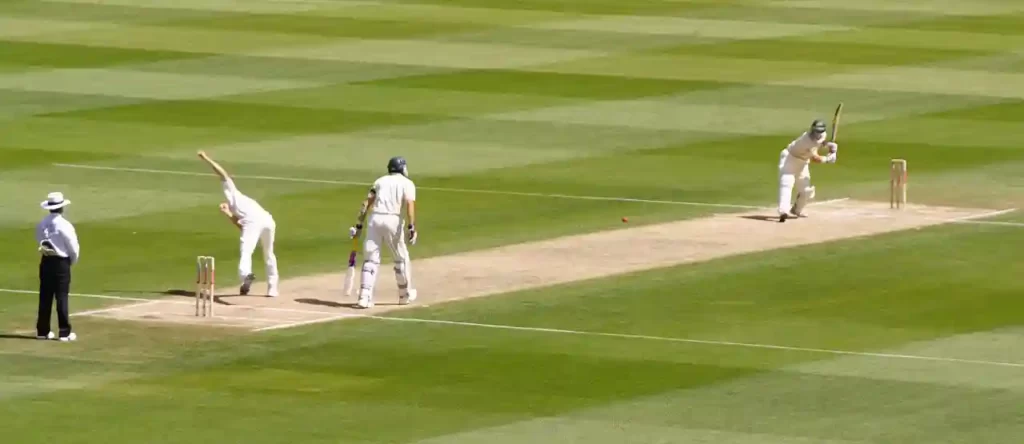Cricket: History and Features of the Game
Cricket is a true English game, with its origins in the 18th century. A game with very similar rules is often mentioned in the historical chronicles of King Edward I as a common form of entertainment for the residents of the county of Kent.
Later on, the British Empire’s expansion into other parts of the world led to the spread of the sport into new countries. Cricket is particularly popular in India, Bangladesh and Australia, where it can rightly be considered a national sport.
There are currently many different cricket leagues and championships around the world. The most prestigious of these is undoubtedly the Cricket World Cup, an international cricket tournament held under the auspices of the ICC. Since 1975 It is held every 4 years and enjoys great popularity among fans from around the world. Judge for yourself, the 2011 Cricket World Cup Final was shown in 200 countries and watched by over 2 billion people.

Game history
The game most likely got its name from the Saxon word “cric,” a curved stick used by British shepherds. They used this stick to close the gates of the pasture where the cattle were kept for the night.
Before its widespread adoption in continental Europe and the various British colonies, cricket was mainly played by young peasants. The game involved two teams, and the rules were as close to modern ones as possible.
For a long time cricket was a folk game and it was not until the mid-18th century that the first official cricket club was formed. This club was established in Hambledon, Hampshire, and for the next 25 years, it was the strongest club in the country.
It was in their team played the legendary cricketer Lamborn, who was considered the best bowler of his time and contributed much to the development of the sport.
Gradually the level of the championship increased and many other professional cricket clubs competed with each other. Not surprisingly, London soon became the capital of English cricket.
In 1814 the first professional cricket stadium – Lord’s Cricket Ground (or Lord’s as it is popularly called) – was built in what is now Dorset Square. The stadium is named after its founder – Thomas Lord, it seats more than 30,000 spectators and can rightly be called the ” Home of Cricket”.
Also in 1814, the Marylebone Cricket Club (MCC) was based there. After a while the MCC became the strongest and most influential team in the country, and under its leadership some of the rules of the game and the structure of the championship were changed.
For a long time, the club was the world’s premier governing body of cricket, and even today it has a major global influence.
Cricket was briefly included in the Olympic program at the beginning of the last century, but due to low competition the sport was excluded.
Rules for attending a match
As we have said above, cricket’s popularity grew along with the growing power of the British Empire. Therefore, it is not surprising that in addition to British teams, the last Cricket World Cup featured teams from Australia, Bangladesh, India, New Zealand, Pakistan, Sri Lanka, South Africa, Afghanistan and the UAE.
Cricket matches can last several days, and it is not uncommon for races to occur a few minutes apart. Often, between runs, players look around leisurely and nothing seems to be happening on the field.
Therefore, many fans take going to the stadium very seriously. Going to a match, they stock up on food and drink, knowing that a long confrontation awaits them.
As in the case of tennis, being a cricket fan is first of all very prestigious. It is a solid occupation to be a cricket fan, spending hours and days at the stadium. It often happens that large companies buy special boxes at the stadium, deciding their political and economic affairs. In fact, they kill two birds with one stone: they have time to cheer for their team and solve their professional issues.
The rules of cricket
Cricket is played by two teams of 11 people, each team taking turns pitching and hitting the ball. The task of each team is to destroy the opponent’s wicket with the ball.
The team that scores the most points (runs) while batting wins the match.
Teams change positions when the pitching team has knocked out all of their opponent’s batsmen. The batsman can be knocked out by knocking the wicket or by catching the ball before it bounces off the turf. The wicket can also be knocked down with the ball or with the hand holding the ball as players run to the ends of the field. The player with the bat can also be eliminated if he leaves the field, so the ball is passed to the catcher who kicks the wickets. The batsman can also accidentally drop the wickets himself, then he is out of the game.
The goal of the game is simple and straightforward: to score more points than your opponent. Points are awarded for runs made by the batsman. The number of runs depends on how far the batsman hits the ball. The farther away the ball flew, the more time the players on the pitch will spend returning it to center field, while the batsman, moving from one “wicket” to another, to score points for the team, making those “runs.
As a rule, per strike, the team has time to make 1-2 runs. The most runs a team can get is if the batsman strikes the ball so hard that it flies off the field without touching the ground. A team scores six runs or “sixier” for such a hit. If the ball leaves the field with one or more bounces, the team will be credited with four runs (or “boundary”).
Where and how is cricket played?
The game of cricket takes place on a large field of oval shape. The most important events of the game develop in the center of the field, on a special track called cricket pitch. It is a rectangle 20 meters long and three wide.
At opposite ends of the track are the wickets themselves, which consist of three stumps – with bail bars resting on them. The batsman’s job is to protect the wicket from the bowler’s throws.
When the ball is served, all players on the pitching team are on the field. The batting team has only two batsmen on the field, with only one involved in the game and the other supporting him until his teammate is knocked out.
The captain decides which nine players will be placed at different points on the field, who will be the bowler and who will be the wicketkeeper. The wicketkeeper is the player who is right behind the batsman and his mission is to catch the ball out of the wicket.
Cricket is played with a special ball, which is made from cork. The ball is then covered with red leather and sewn in the middle to form a special seam, which greatly affects the technique of pitching. As a rule, the bowler tries to hit the ball with the seam on the ground to make its flight path more unpredictable for the batsman.
The match begins with the captains tossing a coin and deciding which team will serve first and which will hit back. The captain’s choice is based on the weather conditions, the condition of the field, and the physical condition of the team.
After six consecutive innings (so-called over) the batter moves to defend the opposite wicket. This continues throughout the match.
If the captain believes that his team has scored a sufficient number of “runs”, he can stop the round of shots on the wicket, that is, switch roles with the other team. In the language of cricket, this means that the team has made a “declaration” . After changing positions, the team that was batting must have a clear idea of how many “runs” it needs to score to win.
How Long Does a Cricket Match Last?
The duration of a cricket match may vary and depends on the format of the particular tournament or match.
The traditional format used in Test matches (international matches) is the longest. A match, which is played over four innings – two per team – can last up to five days (with a limit of six hours per day) unless one of the two opponents wins early.
In the World Cup, this long version is shortened to a “one-day” version. And in these games, teams must determine the winner within one day.
The shortest cricket matches are played in a “Twenty20” format. The entire match is played in one round of 20 pitches for each team and does not exceed a few hours of play.
Cricket betting
Given the popularity of cricket among hundreds of millions of fans from around the world, it is not surprising that betting on this sport is in high demand. If you are a sports betting fan and are looking for a reliable online bookmaker, we advise you to choose such gambling platforms as Linebet and Parimatch. Both of them offer a wide line of cricket betting app, covering all the famous leagues and championships in the sport. Each of the bookmakers welcomes their new users with a 100% first deposit bonus, with which you will significantly increase your chance of winning.
Cricket is a rather confusing game with many rules, so the market for betting on cricket matches is very diverse. As a rule, online bookmakers offer the following basic types of cricket betting:
- Winner of the toss. It is offered to determine which team will serve the ball first and which team will bat first;
- The winner of the match (1X2);
- The best player of the match (several variants are offered);
- The best bundle of players (a group of 2 or 3 players who bring the most points to their team);
- Best bowler of the match;
- The best batsman of the match;
- Total (number of runs);
- Total wickets;
- Accurate score of runs;
- Individual Score Totals;
- Handicap;
- Long-term bets.
And this is not the whole list of betting types. Also, online bookmakers offer combined bets, bets on team statistics, alternative outcomes and individual player performance. To get acquainted with the whole betting market, register on Linebet or Parimatch and go to the betting section.

Moonda Ale
Cricket Content Writer at Cricfacts.com. A seasoned sports journalist who is working in the industry for more than two decades. He is now on facebook also.
